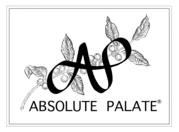Information About Coffee And Our Farms
Our approximate number of Coffea arabica trees: ~1,050 trees on Cynthiana Farm, ~3200 trees on Honalo Farm.
Volcanic soil is very fertile and rich from the breakdown of various minerals that afford nutrients for plants. Hawaiian lava plays a special role in this respect. The Kona Coffee Belt on The Big Island has a high percentage of well-drained basalt soil (basically dark, fine-grained volcanic rock), which formed from lava flows over a wide geological time span encompassing two major geological periods, Holocene (about 12,000 years ago to the present) and Pleistocene (about 2,600,000 to 12,000 years ago).
For details, go to http://pubs.usgs.gov/of/2007/1089/; view Plate 8 and the Pamphlet. We examined USGS maps (Pamphlet, Figures 29 and 35) at the locations for Honalo Farm (19°33'28.90" N/155°55'32.44" W) and Cynthiana Farm (19°18'49.47" N/155°51'47.58" W) to arrive at some understanding of the volcanic material on these properties. Honalo Farm is located on the slope of the Hualalai volcano, near its juncture with the Mauna Loa volcano.
The soil here is essentially comprised of Hualalai Ka'u basalt from 1,500–3,000 years before the present (yr BP), but nearby is Mauna Loa Ka'u basalt from 13,000–50,000 yr BP. Cynthiana Farm is located on the slope of Mauna Loa volcano, and the soil is comprised of Mauna Loa Ka'u basalt from 1,500–3,000 yr BP.
In the Kona Coffee Belt, the soil and climatic conditions are virtually ideal for growing coffee. For most of the growing season, there is usually ample rainfall at elevations above 1200 feet; the daily, tropical temperatures are moderate and consistent; and the regular cloud cover in the afternoons provides "shade-grown" coffee, which is thought to be of the best quality. Our Honalo Farm and Cynthiana Farm are located at a very favorable elevation of 1700–1800 feet.
Given that such shade-grown coffee is produced under the natural Kona weather conditions, no tree cover is required. However, Cynthiana Farm has several cover trees sprinkled throughout the orchard, mainly nitrogen-fixing, leguminous monkeypod trees.
One can experience fine coffee in the same manner as a fine wine, with hypnotic aromas and multilayered complexity on the palate. However, while a fine wine is largely ready to please when poured into the wine glass, given suitable bottle aging and aeration, the coffee beverage does not emerge so easily. The organoleptic quality of brewed coffee is dependent on numerous factors, many of which are difficult to control.
It is well known that the coffee itself can be ruined at many steps from farm to cup, particularly, how and where it is grown; how the fruit is harvested and processed; how the parchment is dried, stored, and aged; how the green beans are selected, stored, and roasted; and how it is brewed. Coffee must be carefully roasted (see below) and then carefully stored. Coffee preparation from the roasted beans is crucial: proper brewing with the right grind.
Relative to grind, for example, French press brewing will use a coarser grind than will pour-over brewing with a filter cone. The water for hot brewing should be ~200 °F, just below the boiling point of 212 °F (at sea level). The ratio of water to ground coffee is crucial so as to not over-extract the coffee, as over-extraction will lead to more bitterness, and flavor imbalance, in the final product.
Basically, one should not skimp on the amount of ground coffee and thereby keep the amount of water limited in relation to the amount of ground coffee. While this approach will use more coffee for a given amount of beverage, the taste experience will generally be much better. If the tasted brew seems too strong when sampled, it can easily be diluted with hot water to the desired strength.
In enjoying brewed premium coffee, there is a fairly brief time window to realize optimal taste quality because a noticeable decline in taste characteristics becomes evident starting around 30–45 min after brewing. So, be ready to drink your fresh coffee shortly after brewing!
While debatable, some people insist that an air roaster provides superior roasted coffee to a drum roaster, and we are solidly in the air-roaster camp. With our fluidized-bed air roaster, chaff from the silver skin on the beans is removed and collected during roasting so that it can't burn and affect the coffee's taste.
A Medium Roast of premium, single-estate coffee (~410 °F, start of the first crack) is probably the best level to represent the terroir of single-estate coffee. Stronger roasting (City Roast, 425 °F; Full City Roast, 435 °F; Vienna Roast, 445 °F, middle of the second crack) will emphasize more and more the taste of the roasting over the terroir. The degree of roasting is a personal taste preference that one may wish to vary for different coffees and brewing methods.
